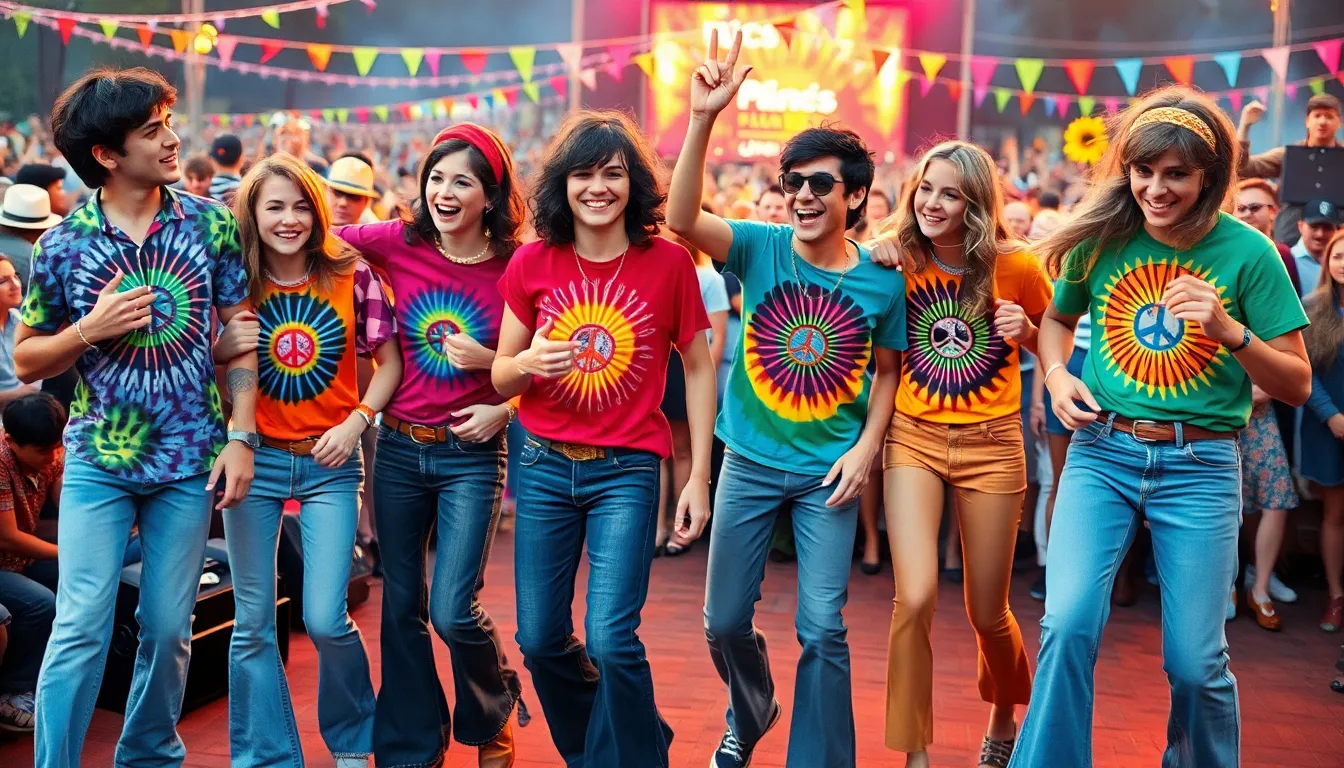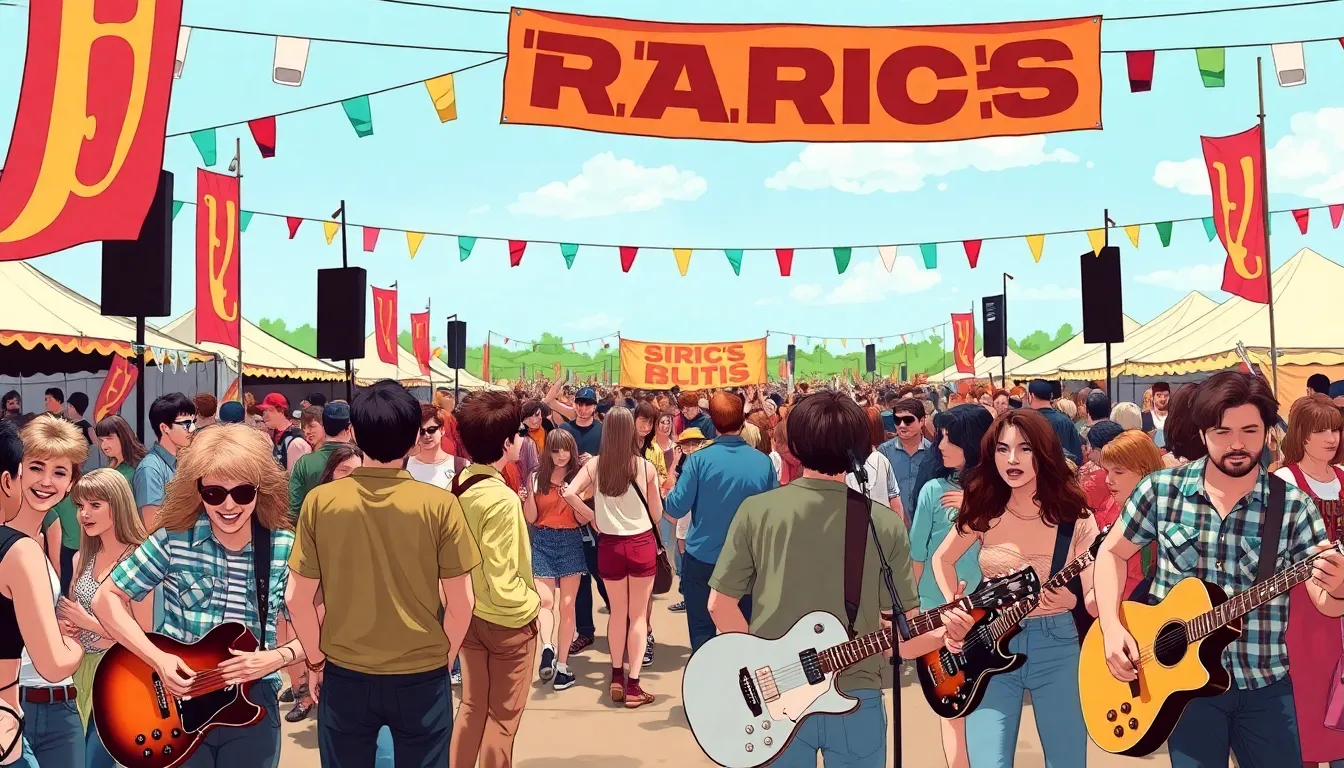
60s Pop Culture: Discover the Revolutionary Trends That Shaped Our Modern World
The 1960s were a wild ride, a kaleidoscope of vibrant colors and revolutionary ideas that transformed society. From the groovy beats of rock ‘n’ roll to the counterculture movements that challenged the status quo, this decade was anything but boring. It’s a time when bell bottoms were a fashion statement and peace signs became symbols of hope.
Imagine a world where music could unite generations and art could ignite change. The influence of 60s pop culture still echoes today, shaping everything from fashion to social movements. Buckle up as we take a nostalgic journey through this electrifying era, exploring the trends, icons, and unforgettable moments that defined a generation. Get ready to relive the magic and mayhem of the 60s—because who wouldn’t want to dance like nobody’s watching in a tie-dye shirt?
60s Pop Culture
The 1960s marked a pivotal period of cultural evolution. Rock ‘n’ roll music surged in popularity, with artists like The Beatles and The Rolling Stones defining the sound of a generation. Music festivals, notably Woodstock in 1969, became symbols of freedom and counterculture.
Fashion trends transformed significantly. Styles such as bell bottoms, tie-dye shirts, and mini skirts became ubiquitous, reflecting the era’s spirit of rebellion. Iconic figures, including Twiggy and Jimi Hendrix, influenced their peers and defined contemporary aesthetics.
Social movements gained momentum during this time. The civil rights struggle propelled activists like Martin Luther King Jr. and Malcolm X into the limelight. Women’s liberation sought equality and autonomy; actions such as the Miss America protest in 1968 exemplified these aspirations.
Television became a key medium, showcasing groundbreaking series like “The Twilight Zone” and “Star Trek.” Sitcoms such as “The Dick Van Dyke Show” captured everyday life while introducing progressive themes. This expansion in media allowed diverse voices to emerge, shaping public discourse.
Art movements flourished, with pop art rising to prominence. Artists like Andy Warhol challenged traditional boundaries, creating works that celebrated consumerism and celebrity culture. Their creations still resonate within today’s art scene.
Diverse cultural phenomena in the 1960s left an indelible mark. The fusion of music, fashion, activism, and art formed a vibrant tapestry that continues to inspire modern trends and movements. Each of these elements played a crucial role in defining this dynamic decade and shaping the subsequent cultural landscape.
Key Music Trends

The 1960s marked a pivotal decade for music, deeply influencing pop culture and societal change. The sound of the era derived its energy primarily from rock and roll, which shaped youth culture significantly.
The Rise Of Rock And Roll
Rock and roll skyrocketed in popularity during the 60s, fueled by innovative artists who pushed musical boundaries. Artists experimented with new sounds and styles, elevating rock music from its roots in rhythm and blues. This genre dominated the airwaves, with guitar riffs and catchy lyrics captivating audiences across the globe. The influence of the genre echoed through various social movements, uniting youth in the spirit of rebellion and exploration. As the decade progressed, concerts and festivals became epicenter venues for cultural expression.
Iconic Artists And Bands
Iconic artists and bands emerged, leaving an indelible mark on music history. The Beatles revolutionized music itself with their unprecedented popularity and songwriting prowess. Concurrently, The Rolling Stones captured the raw energy and edge of rock music. Other acts like Bob Dylan infused folk and political themes into their songs, inspiring a generation. Additionally, the Beach Boys introduced harmonies that defined the California sound. Each group and individual created a unique sound, contributing to the rich tapestry of 60s music that still resonates today.
Influential Fashion Styles
The 1960s showcased dynamic fashion styles that continue to inspire today. Influences came from various cultural movements and celebrities of the time.
Mods And Rockers
Mods embraced sharp, tailored suits with a focus on aesthetic. Their style featured skinny ties, button-down shirts, and tailored jackets, often complemented by sleek hairstyles. Rockers favored leather jackets, jeans, and heavy boots, exuding a rebellious spirit. They often incorporated accessories like bandanas and motorcycle goggles into their looks. This fashion rivalry introduced diverse styles that played a crucial role in youth identity. With their distinct aesthetics, Mods and Rockers highlighted the decade’s bold experimentation in personal expression.
The Hippie Movement
The Hippie Movement revolutionized fashion with its emphasis on individuality and peace. Colorful tie-dye shirts, flowing maxi dresses, and bell-bottom jeans became iconic symbols of the counterculture. Accessories often included flower crowns, beads, and peace sign jewelry, reinforcing their messages of love and unity. Bright colors and eclectic patterns reflected the era’s spirit of freedom and nonconformity. Influential figures like Janis Joplin and Jerry Garcia popularized these styles, making them synonymous with the movement. These fashion choices shaped not only the identities of young people but also left a lasting mark on mainstream culture.
Revolutionary Social Changes
The 1960s marked a pivotal period for social change in the United States. Transformative movements reshaped societal norms and values.
Civil Rights Movement
The Civil Rights Movement fought for equality and justice for African Americans. Key events included the March on Washington in 1963, where Martin Luther King Jr. delivered his iconic “I Have a Dream” speech. Activists confronted segregation and discrimination through peaceful protests and legal challenges. The Civil Rights Act of 1964 prohibited discrimination based on race, color, religion, sex, or national origin, representing a significant victory for the movement. Grassroots organizations, such as the Student Nonviolent Coordinating Committee (SNCC) and the Southern Christian Leadership Conference (SCLC), played crucial roles in mobilizing communities and advocating for change. Throughout the decade, the movement inspired artists, influenced music, and ignited passion for social justice that endures even today.
Women’s Liberation Movement
The Women’s Liberation Movement emerged as a powerful force for gender equality. This movement challenged traditional gender roles and advocated for women’s rights in workplaces, education, and reproductive health. The publication of Betty Friedan’s “The Feminine Mystique” in 1963 sparked widespread discourse about women’s dissatisfaction with domestic life. Activists organized protests, such as the Miss America pageant demonstration in 1968, to highlight the objectification of women and demand recognition. The establishment of the National Organization for Women (NOW) in 1966 galvanized efforts toward equality. Landmark legislation, including Title IX in 1972, prohibited sex-based discrimination in federally funded education programs, solidifying the movement’s impact on society.
Impact Of Film And Television
Film and television during the 1960s played crucial roles in shaping pop culture. These mediums introduced new ideas and reflected societal shifts, influencing public perception and behavior.
Iconic Movies Of The Decade
Numerous films defined the era, with Easy Rider (1969) epitomizing the counterculture movement. This film explored freedom and rebellion, resonating deeply with youth. Bonnie and Clyde (1967) broke conventional storytelling rules, blending romance with crime. The Graduate (1967) tackled themes of disillusionment, symbolizing a generational gap. Movies like West Side Story (1961) showcased significant dance and music integration, highlighting societal issues like racism. With these films, directors challenged existing norms and contributed to the cultural dialogue of the decade.
Popular TV Shows And Their Influence
Television became a transformative medium, influencing public consciousness. Star Trek, which premiered in 1966, introduced progressive themes, including diversity and cooperation among species. Shows like The Dick Van Dyke Show and The Andy Griffith Show provided lighthearted, relatable comedy while addressing family dynamics. Sesame Street, launching in 1969, pioneered educational programming for children, setting a standard for future children’s television. These series reflected and shaped societal values, providing commentary on contemporary issues and fostering cultural conversations across America.
Conclusion
The pop culture of the 1960s remains a powerful testament to a time of profound change and creativity. Its influence continues to shape music, fashion, and social movements today. The era’s spirit of rebellion and innovation sparked conversations that resonate across generations.
From the electrifying sounds of rock ‘n’ roll to the bold fashion statements of the Hippie Movement, the 60s laid the groundwork for cultural expression. The social progress achieved during this decade paved the way for ongoing advocacy for equality and justice.
As society reflects on this vibrant era, it’s clear that the legacy of the 1960s will endure, inspiring future generations to challenge norms and embrace individuality.